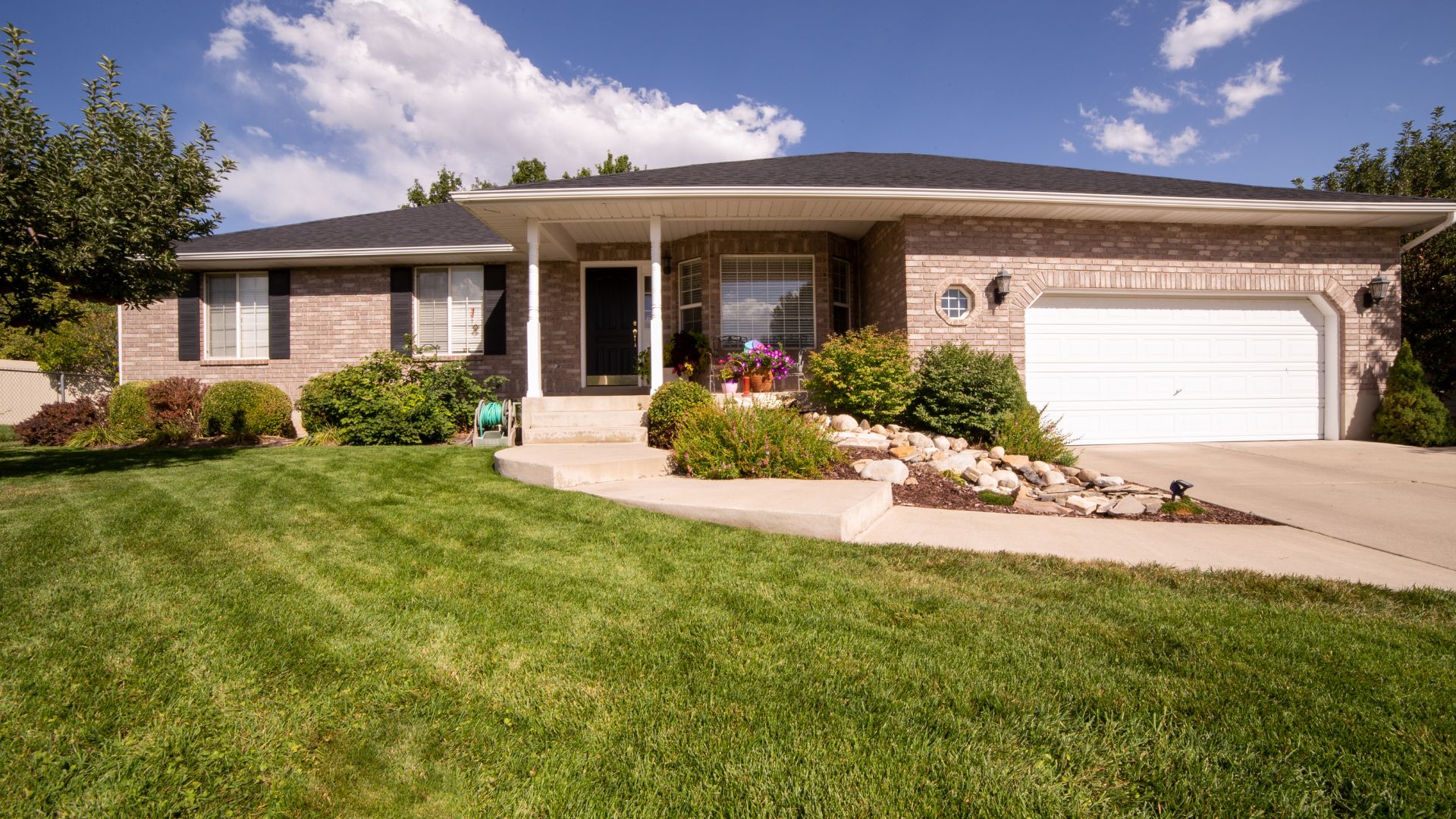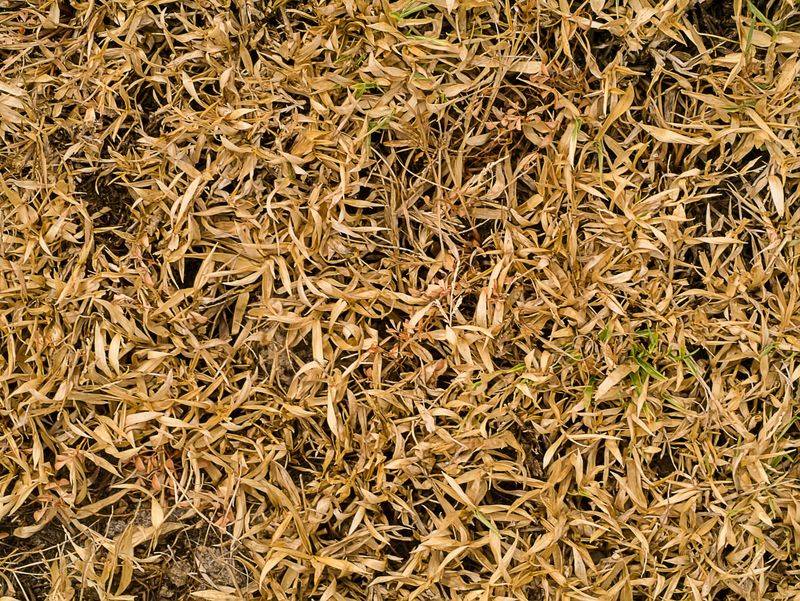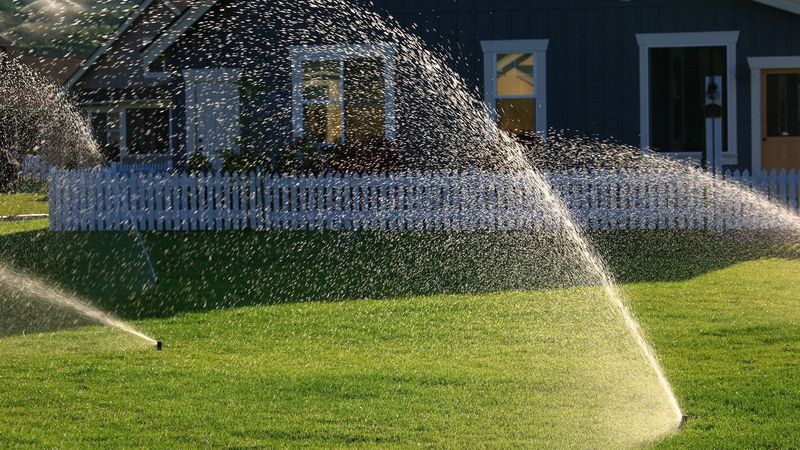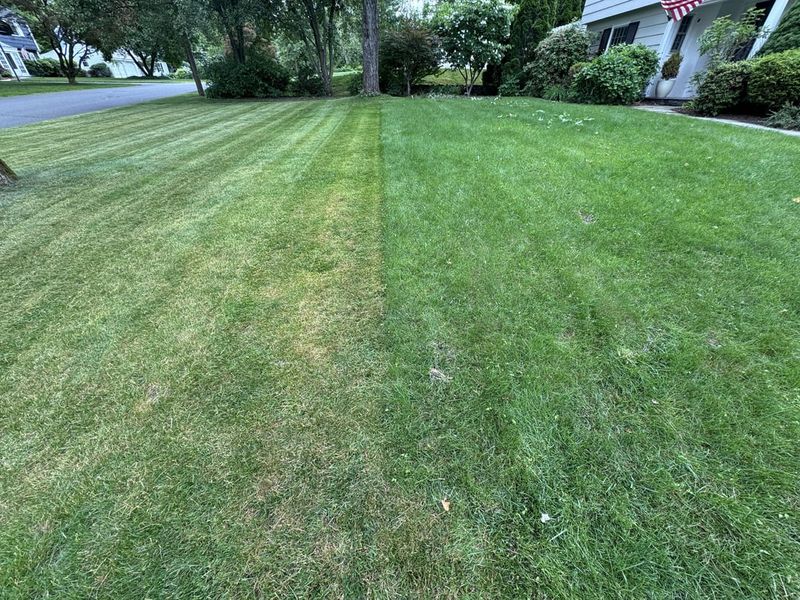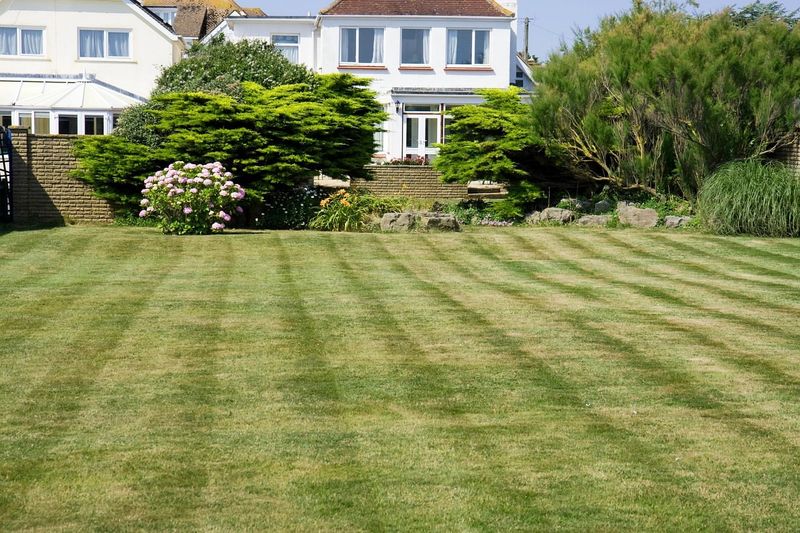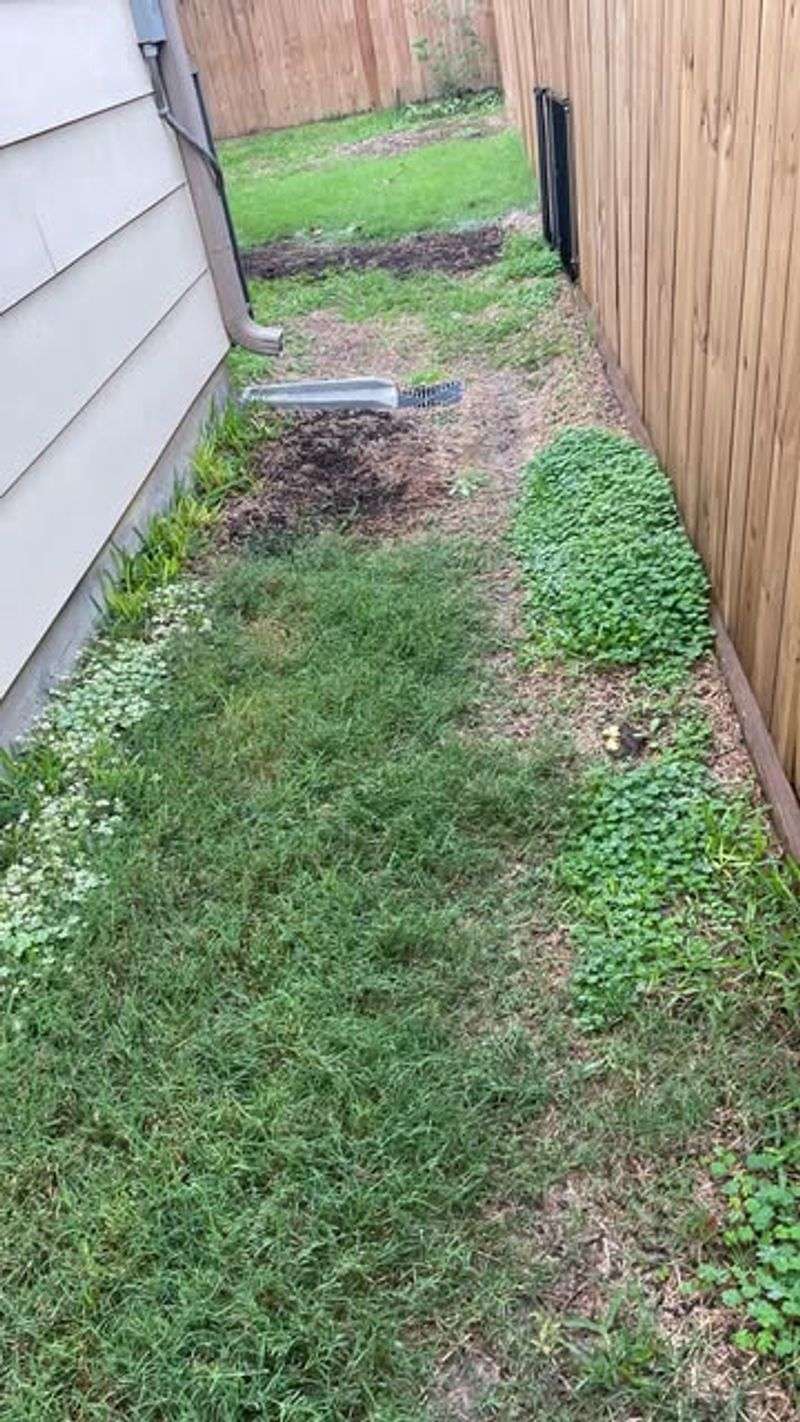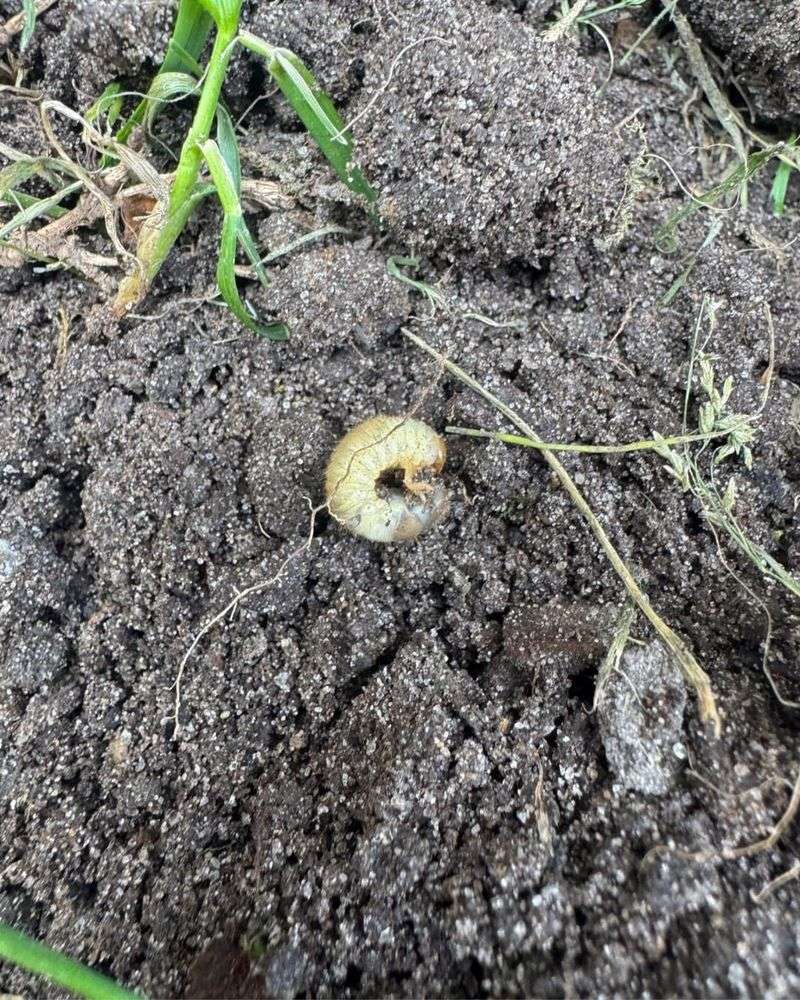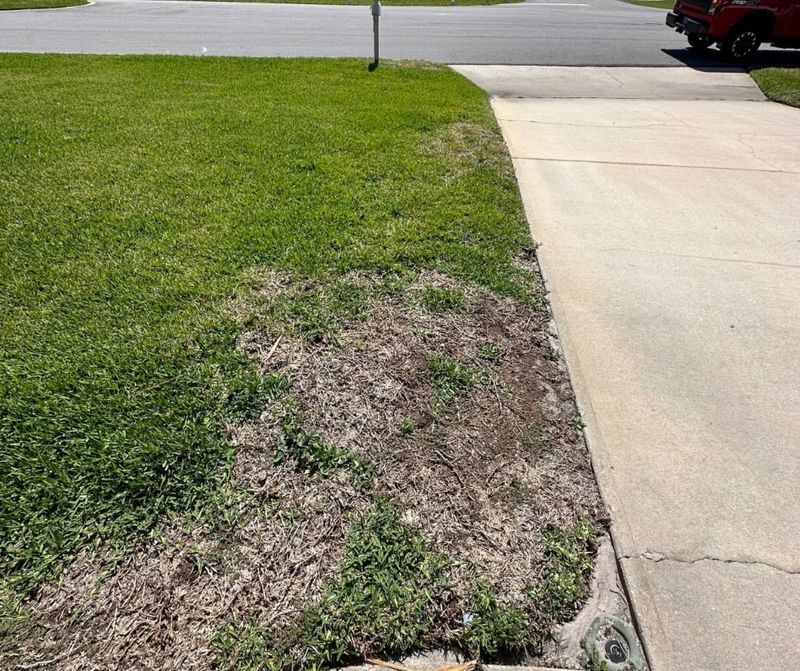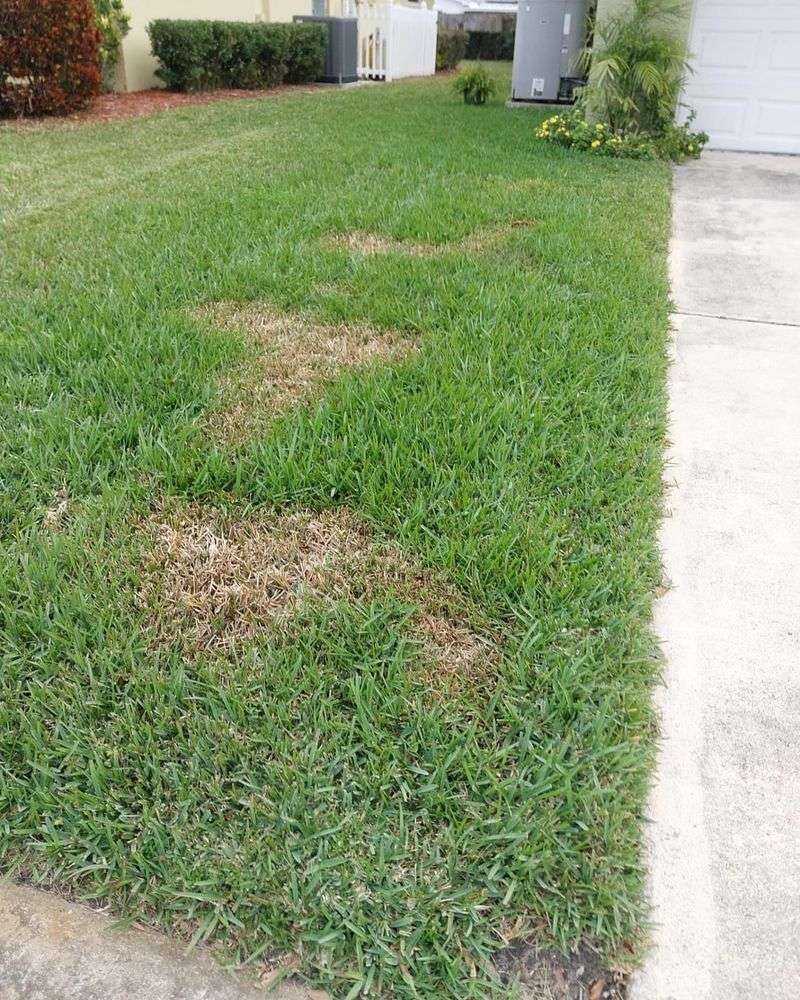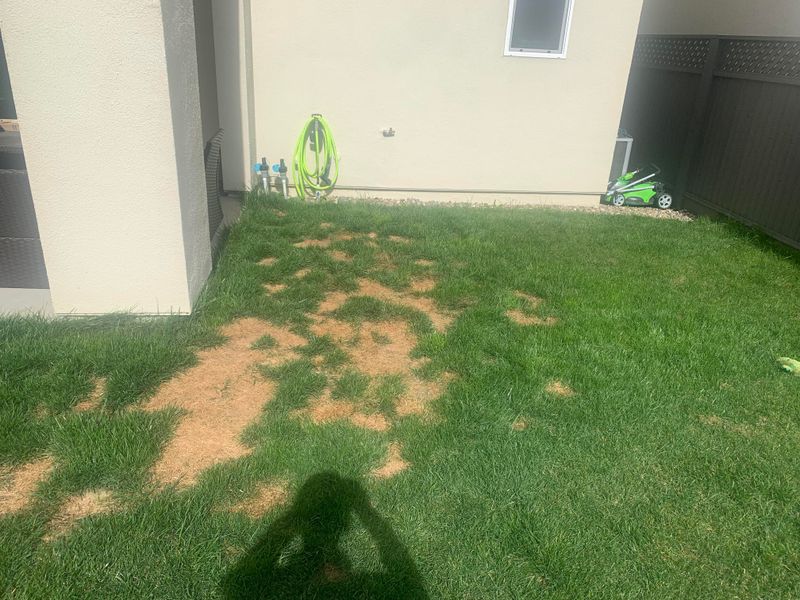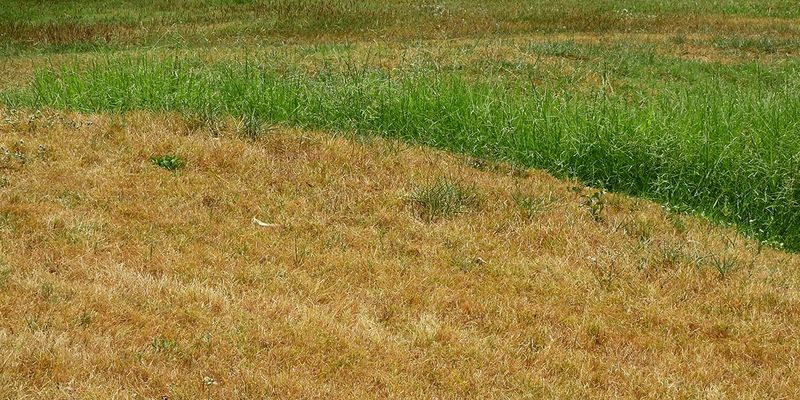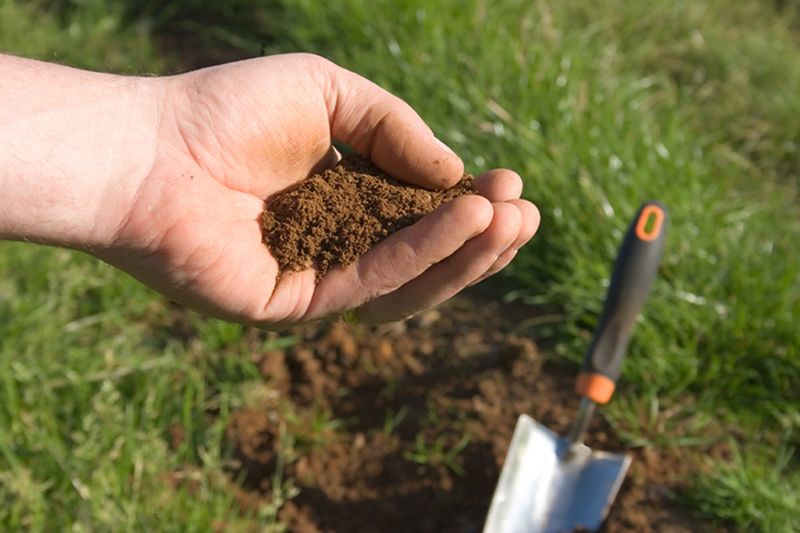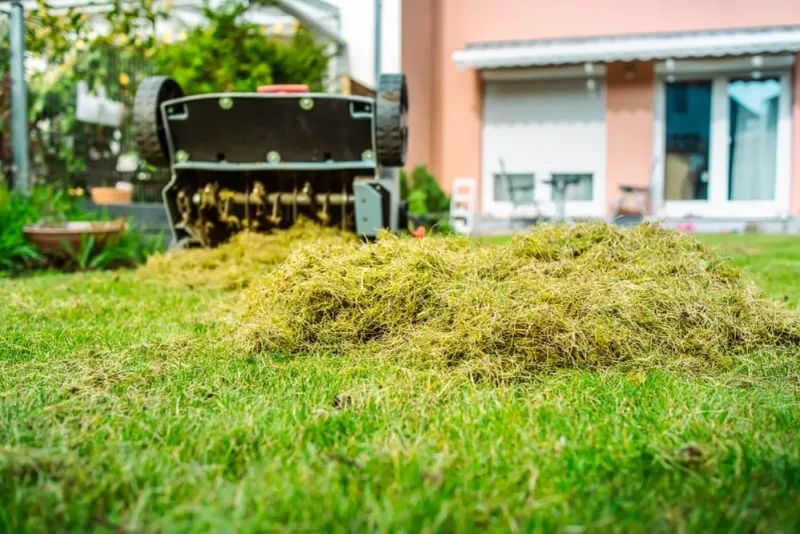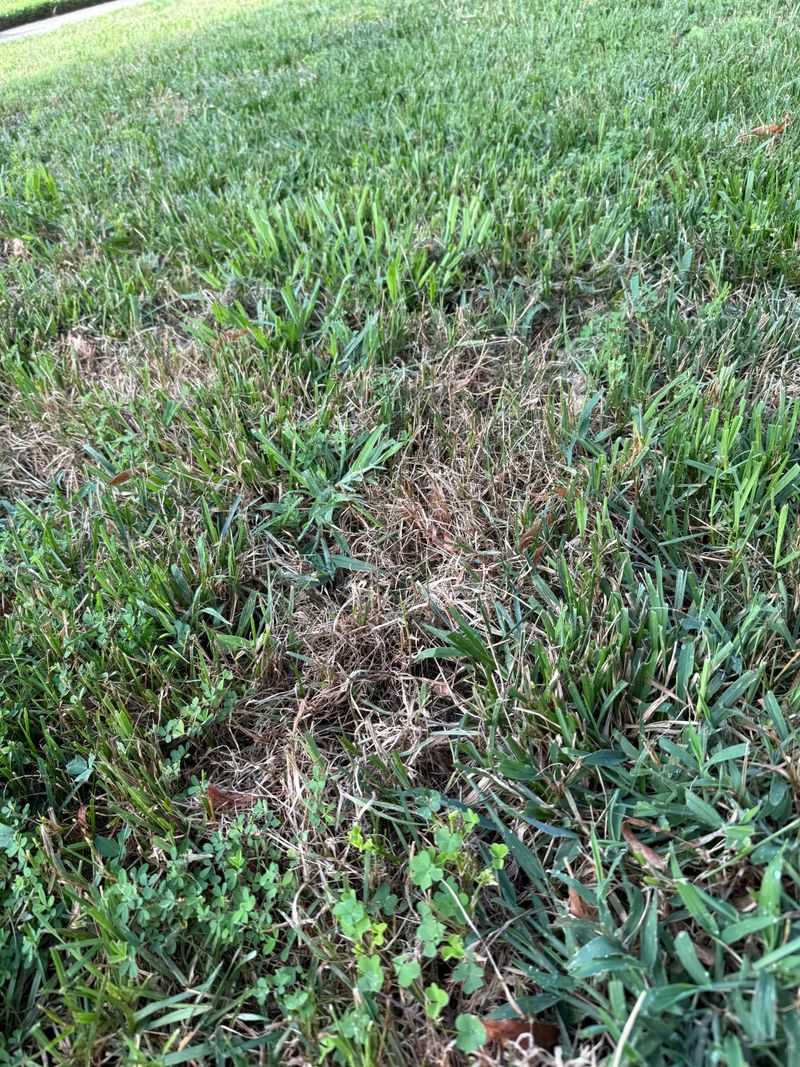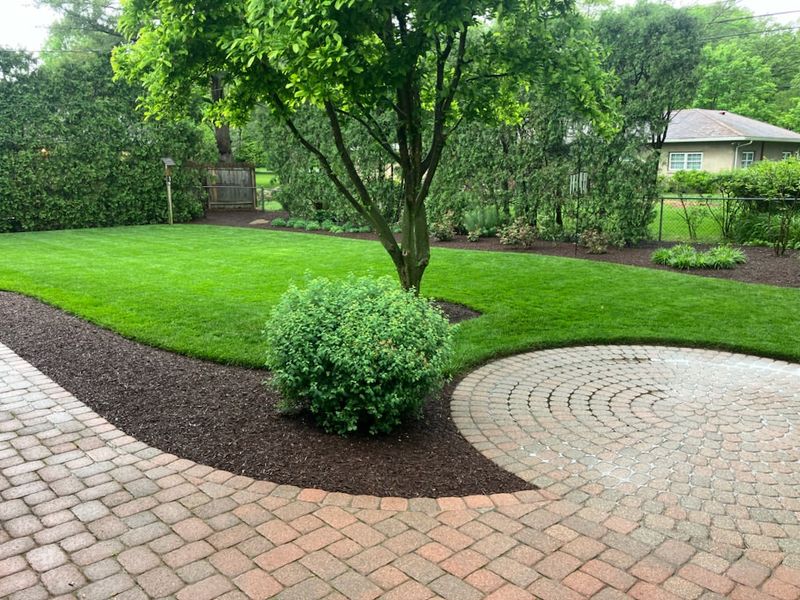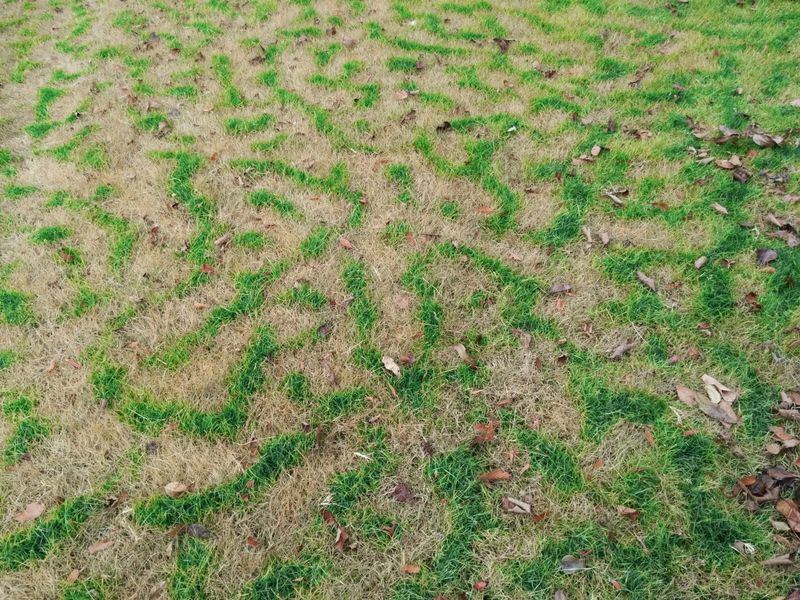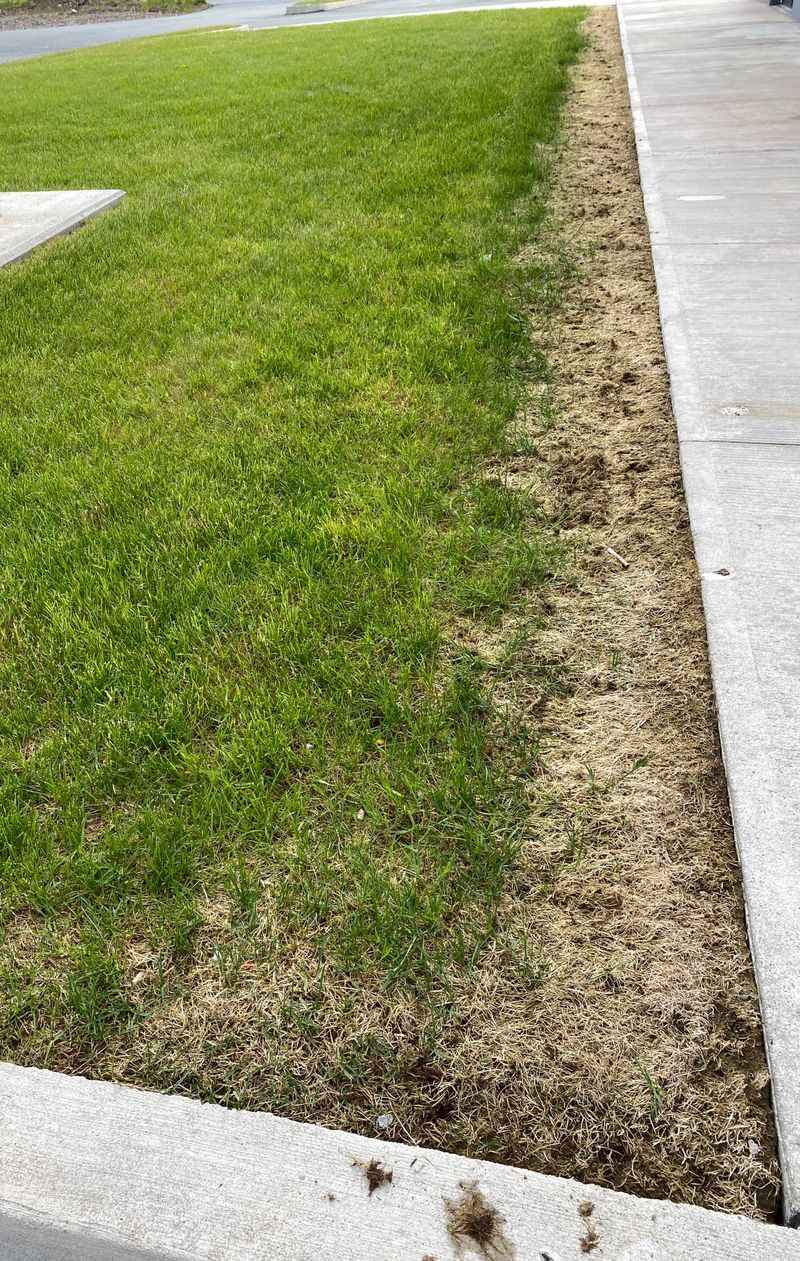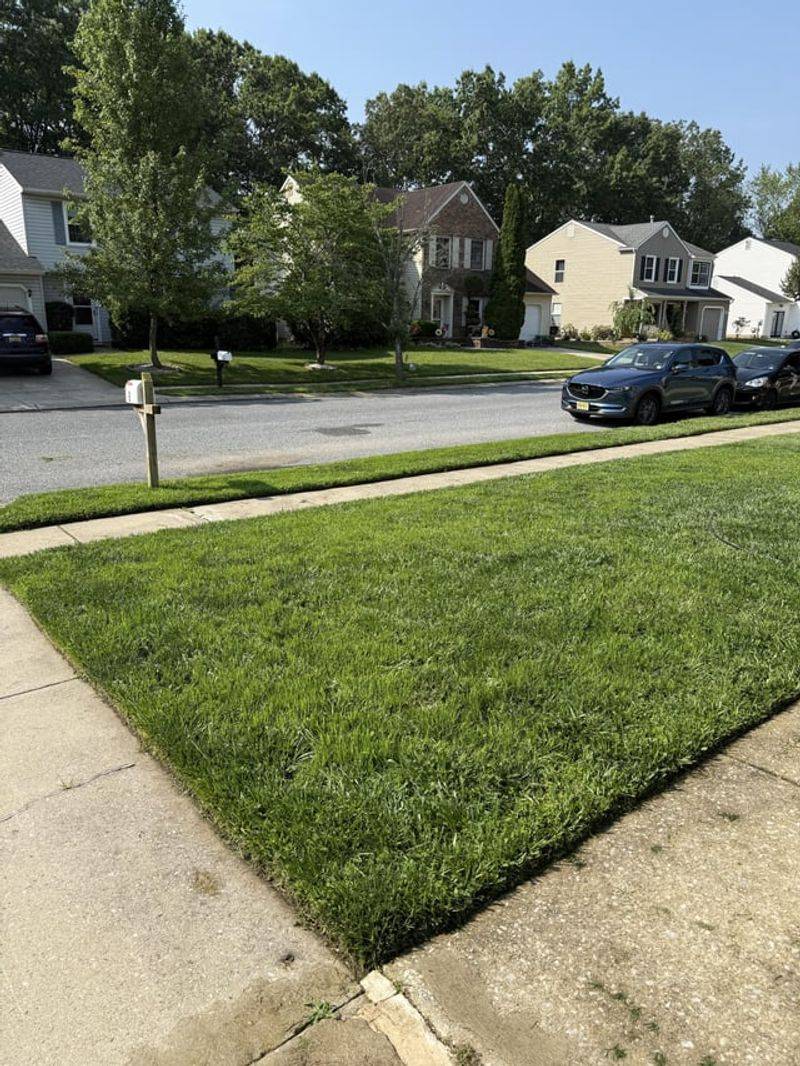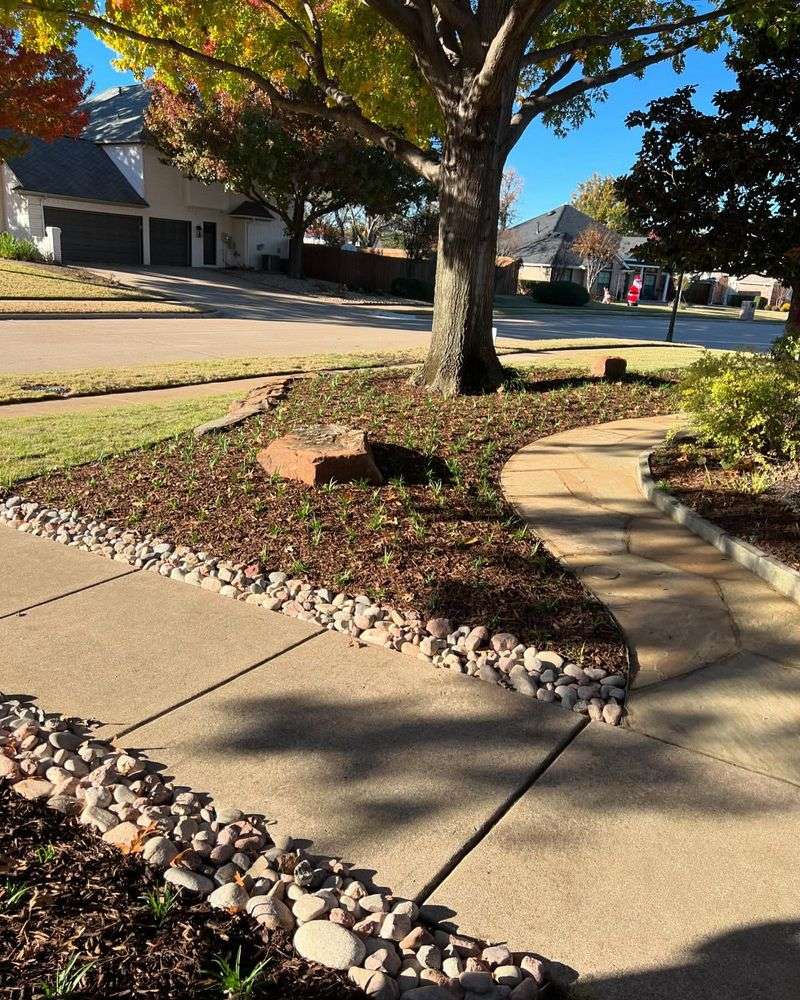If your lawn’s gone from lush to lackluster this July, you’re definitely not the only one. Blazing temps and dry spells can stress turf in a hurry—but heat isn’t the only suspect behind those crispy, brown patches.
Common culprits include drought, compacted soil, grubs, or even lawn diseases that thrive in summer conditions. Mowing too short or watering at the wrong time can also send your grass into a downward spiral.
To bring back that vibrant green, start by diagnosing the issue—check soil moisture, inspect roots, and adjust your care routine. With a few smart changes, your lawn can bounce back and look its summer best again.
1. Drought Stress
The scorching July sun pulls moisture from grass faster than roots can absorb it. Without adequate water, grass blades conserve energy by going dormant, resulting in that dreaded brown appearance.
Water deeply but infrequently – about 1-1.5 inches per week in early morning hours. This encourages roots to grow deeper and become more drought-resistant over time.
Last summer, I noticed my lawn bounced back remarkably well after looking completely dead during a three-week dry spell. Proper grass varieties in your region can withstand impressive amounts of drought.
2. Improper Watering Habits
Shallow, frequent watering creates weak root systems that can’t handle July heat. When roots stay near the surface, they’re more vulnerable to temperature extremes and dry conditions.
Try the tuna can trick: place empty tuna cans around your lawn while watering. When they’re filled about an inch, you’ve watered enough to reach deeper root zones.
Changing my watering schedule from daily light sprinkles to twice-weekly deep soakings transformed my lawn’s summer resilience. The grass actually needs that drying period between waterings to develop properly.
3. Cutting Grass Too Short
Mowing too low removes the grass’s natural sun protection. Short grass exposes soil to direct sunlight, increasing evaporation and stress on the root system during hot July days.
Raise your mower deck to leave grass 3-4 inches tall during summer. Taller grass shades the soil, retains moisture better, and develops deeper roots that access water reserves during dry periods.
My neighbor and I have the same grass type, but his always browns by mid-July while mine stays greener. The difference? His dedication to that golf-course look with super short cuts versus my lazier, higher mowing approach.
4. Heat Stress
When temperatures consistently exceed 85°F, grass metabolism slows dramatically. The plant conserves energy by reducing growth and allowing some blades to brown, especially in full-sun areas without cooling shade.
Create temporary shade with patio umbrellas over particularly stressed areas during the hottest parts of the day. For long-term solutions, consider planting heat-tolerant grass varieties suited to your region.
The temperature difference between my backyard (partially shaded) and front yard (full sun) can be nearly 15 degrees on July afternoons. The visual difference in grass health follows exactly the same pattern.
5. Compacted Soil
Years of foot traffic, play, and even mowing patterns compress soil particles together. This compression prevents water, nutrients, and oxygen from reaching grass roots, leading to weakened plants that brown quickly in summer stress.
Aerate your lawn in spring or fall by removing small plugs of soil. This creates pathways for air, water, and nutrients to reach the root zone where they’re needed most.
The transformation after aerating my heavily-used lawn was almost magical. Areas where kids played that would inevitably brown by July now stay green weeks longer into the summer heat.
6. Grub Infestation
These C-shaped larvae feast on grassroots during their development cycle. By July, spring-hatched grubs have grown large enough to cause significant damage, creating irregular brown patches that lift easily like a loose carpet.
Test suspicious areas by gently pulling on the grass. If it lifts without resistance, check for white grubs in the soil below. Beneficial nematodes or milky spore are natural control options.
When investigating a mysterious dead patch last summer, I was shocked to find over 15 grubs in a single square foot of soil! No wonder that section couldn’t survive the July heat with so few functioning roots.
7. Chinch Bug Damage
These tiny insects suck the sap from grass blades while injecting a toxin that blocks water movement. The damage appears as expanding yellow patches that quickly turn brown, typically starting in the hottest, sunniest areas of your lawn.
Place a metal can with both ends removed into your lawn and fill with water. If chinch bugs are present, they’ll float to the surface within minutes, looking like small black specks with white wings.
The sneaky thing about chinch bugs is how their damage mimics drought stress. I spent weeks increasing watering on affected areas before finally doing the float test and discovering the true culprits.
8. Brown Patch Fungus
Hot, humid July weather creates perfect conditions for this fungal disease. It appears as circular brown areas with a darker border, often with a smoke-ring pattern visible in early morning. The centers sometimes recover while the circles expand outward.
Reduce evening watering and improve air circulation by thinning nearby shrubs. Fungicides can help, but addressing environmental conditions is more effective for long-term prevention.
After installing a new irrigation system that ran overnight, my lawn developed perfect brown patch circles within a week. Switching to morning watering allowed the grass to dry properly during the day and stopped the spread completely.
9. Dog Urine Spots
The concentrated nitrogen in dog urine burns grass quickly, especially during hot July days when plants are already stressed. These spots typically appear as round brown patches with unusually green rings around the edges where diluted nitrogen acts as fertilizer.
Train your dog to use a designated bathroom area with gravel or mulch. For existing spots, thoroughly soak the area with water to dilute the concentration of salts and nitrogen.
My neighbor’s confusion about the perfect polka-dot pattern of dead spots across his front lawn ended when he installed a security camera and discovered the neighborhood dogs’ morning ritual. Mystery solved!
10. Fertilizer Burn
Applying too much fertilizer or uneven spreading creates concentrated areas of salts and nutrients. During July heat, these excess chemicals draw moisture from grass blades through osmosis, leaving behind crispy, brown streaks or patches.
Always water thoroughly after fertilizing to help dissolve and distribute nutrients evenly. Use a proper spreader rather than hand-broadcasting, and follow package rate recommendations precisely.
The striped pattern of brown across my lawn last July was embarrassing evidence of my impatience while fertilizing. The dead stripes perfectly matched my walking path as I hurried through the task.
11. Soil PH Imbalance
Grass struggles to absorb nutrients when soil is too acidic or alkaline. July’s heat amplifies this stress, causing patches to yellow then brown as plants can’t access the nutrition they need, even when it’s present in the soil.
Test your soil pH with an inexpensive kit from a garden center. Add lime to raise pH (reduce acidity) or sulfur to lower pH (reduce alkalinity) based on your results.
The difference between my front and back lawn puzzled me for years until a soil test revealed a full 1.5 pH difference between the two areas. The acidic back lawn always browned first during summer stress.
12. Thatch Buildup
A thick layer of dead grass material between living grass and soil acts like a sponge, absorbing water before it reaches roots. During July heat, this barrier becomes especially problematic as it prevents critical moisture from reaching the root zone.
Check thatch by removing a small wedge of lawn about 3 inches deep. If the brown layer between grass and soil exceeds ½ inch, dethatch using a rake or mechanical dethatcher in spring or fall.
I couldn’t figure out why my sprinklers ran for ages while the lawn still looked thirsty. Cutting out a sample revealed almost two inches of thatch that was intercepting nearly all the water before it reached the actual soil!
13. Shallow Root Systems
Grass with underdeveloped roots can’t access deeper soil moisture during July’s heat. When surface soil dries quickly under summer sun, shallow-rooted lawns have no water reserves to draw upon, resulting in rapid browning.
Encourage deeper roots by watering deeply but infrequently. This trains roots to grow downward in search of moisture rather than staying near the surface waiting for the next light watering.
Comparing the root depth between my established lawn and newly sodded section was eye-opening. The new sod’s roots were barely an inch deep and browned within days of July heat, while the three-year-old section’s four-inch roots kept it green much longer.
14. Poor Air Circulation
Areas surrounded by structures, dense plantings, or in low spots receive less airflow. This creates humid microclimates where fungal diseases thrive and grass remains wet longer, especially problematic during July’s combination of heat and occasional storms.
Thin out surrounding shrubs, create gaps in solid fencing, or install decorative trellises that allow air movement while maintaining privacy. Avoid overplanting areas directly adjacent to lawn edges.
The narrow passage between my house and fence always turned brown by July despite identical care to the rest of the lawn. Installing a simple box fan during the most humid weeks made a surprising difference by keeping air moving through this trouble spot.
15. Dormant Warm-Season Grass
Many southern grasses like Bermuda, Zoysia, and St. Augustine naturally slow growth and may brown slightly during peak summer heat. This is actually a normal protective response, not damage, allowing the grass to conserve energy during stress periods.
Resist the urge to overwater dormant warm-season grass. Light irrigation to prevent complete desiccation is sufficient until temperatures moderate and natural growth resumes.
My first summer with Bermuda grass had me panicking at the slight browning during July’s hottest weeks. A lawn care professional explained this was actually normal and that my panic-watering was doing more harm than good.
16. Salt Damage
Residual winter de-icing salts or saltwater pool splashes create toxic soil conditions that prevent proper water absorption. By July, the cumulative effect of salt combined with heat stress makes these areas particularly prone to browning and death.
Flush affected areas with large amounts of fresh water to leach salts below the root zone. Gypsum applications can help displace sodium ions in severely affected soils.
The mysterious dead strip along my driveway remained a puzzle until I remembered how much salt I’d applied during February’s ice storm. Even months later, that concentrated salt continued affecting my July lawn health.
17. Aging Lawn Varieties
Older lawns often contain grass varieties bred decades ago without modern drought and heat tolerance. These aging grass populations struggle more during July heat compared to newer, improved cultivars specifically developed for climate resilience.
Consider overseeding in fall with newer, more heat-tolerant varieties compatible with your existing lawn type. This gradually introduces tougher grass genetics without requiring complete lawn replacement.
The difference between my 1970s-established lawn and my neighbor’s recently installed turf during July heatwaves is remarkable. Breeding advances in just the past decade have created grass varieties that maintain color under conditions that quickly brown older types.
18. Excessive Shade Evolution
Trees that were small when your lawn was established have matured, creating deep shade where sun-loving grass once thrived. By July, these grass plants have depleted their energy reserves after struggling through spring with insufficient sunlight.
Either prune trees to allow dappled light to reach the lawn or transition shady areas to shade-tolerant groundcovers like pachysandra or woodland gardens that thrive in low-light conditions.
Watching the progression of brown patches expand yearly under my growing maple trees finally convinced me to stop fighting nature. The woodland garden that replaced that struggling grass section now looks beautiful year-round without the July disappointment.

